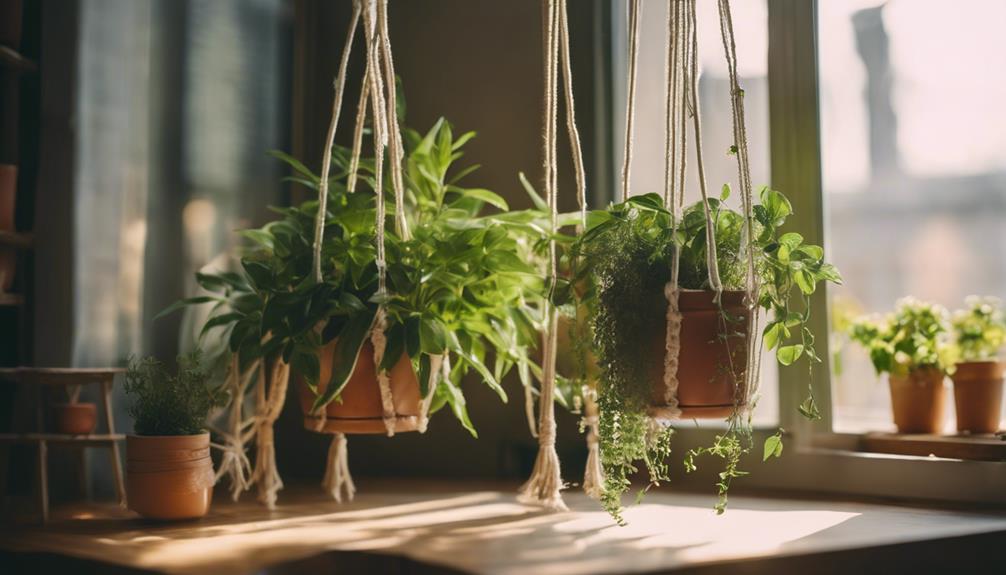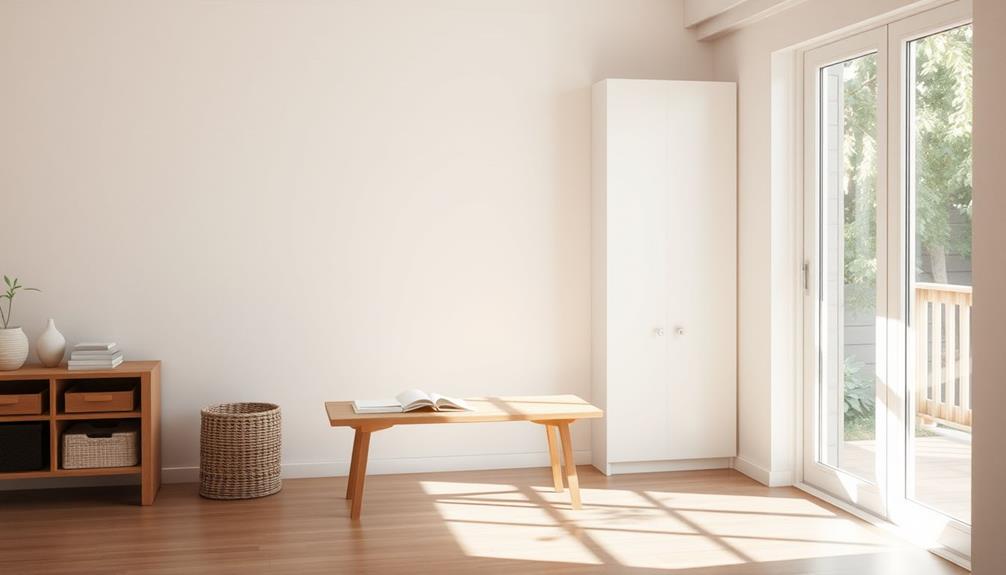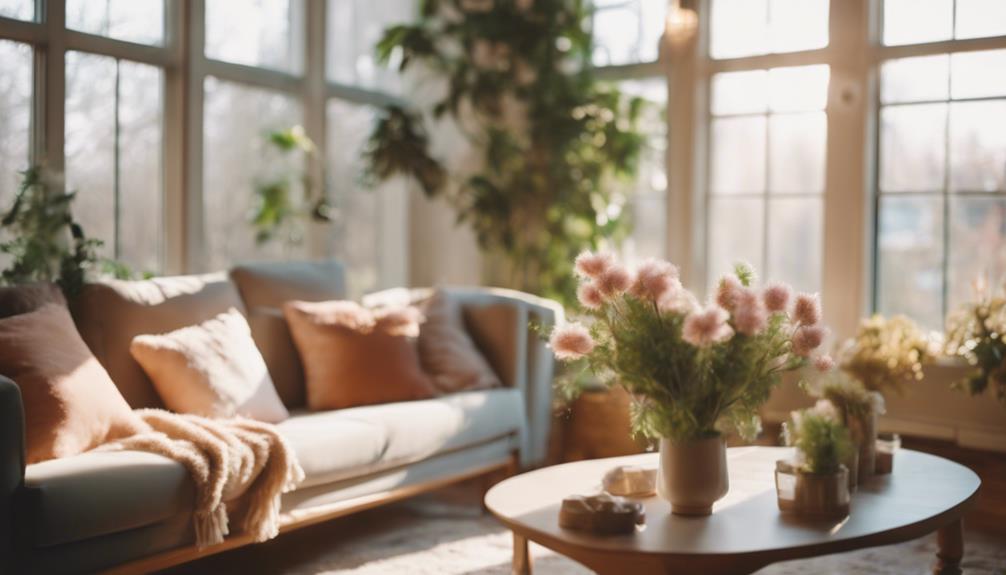You can easily transform your apartment into a green oasis with an indoor garden. Start by assessing your space and light; choose plants like herbs for sunny spots and pothos for low light. Use pots with drainage and quality soil to support growth. Establish a consistent watering routine and keep an eye out for pests. Regular maintenance, like pruning and dusting leaves, keeps your plants healthy. When the herbs are ready, enjoy fresh flavors in your meals. There's plenty more advice to create your flourishing indoor garden, so let's explore further to ensure your success. You can also incorporate vertical gardening solutions, such as shelves or wall-mounted planters, to maximize space and add depth to your greenery. Experiment with different plant combinations to create a visually appealing setup that complements your decor. And if you’re still searching for the perfect place to start your indoor garden, master apartment hunting tips to find a space with ample natural light and room for your green oasis.
Key Takeaways
- Assess available light and space in your apartment to select suitable plants for optimal growth.
- Choose a variety of plants, including culinary herbs and air-purifying options, to enhance your indoor environment.
- Use containers with drainage holes and high-quality potting mix to promote healthy plant development.
- Establish a consistent watering routine and monitor plant health to ensure longevity and vitality.
Assessing Space and Light
To create a thriving indoor garden, you'll need to assess your available space and light sources carefully. Start by measuring the dimensions of potential garden areas and noting their accessibility for maintenance.
Look for natural light options, like south-facing windows that offer direct sunlight, while east and west-facing windows provide indirect light. Evaluate temperature and humidity levels, as these factors significantly impact plant growth.
If your space lacks sufficient natural light, consider using grow lights to supplement. Don't forget to assess proximity to water sources, ensuring you can easily maintain your plants.
Choosing the Right Plants
Selecting the right plants for your indoor garden hinges on understanding your available light and your culinary preferences.
First, assess the light conditions in your space; direct sunlight supports herbs like basil and rosemary, while low-light areas suit plants like pothos or snake plants.
Next, consider what you'd love to cook with. If you enjoy fresh herbs, opt for mint, oregano, or parsley. You can also include air-purifying plants, such as peace lilies, to enhance your indoor environment.
Research each plant's specific care needs to ensure successful growth.
Ultimately, the key is to choose plants that fit your light conditions and align with your cooking interests, creating a thriving indoor garden that suits your lifestyle.
Container Selection and Soil
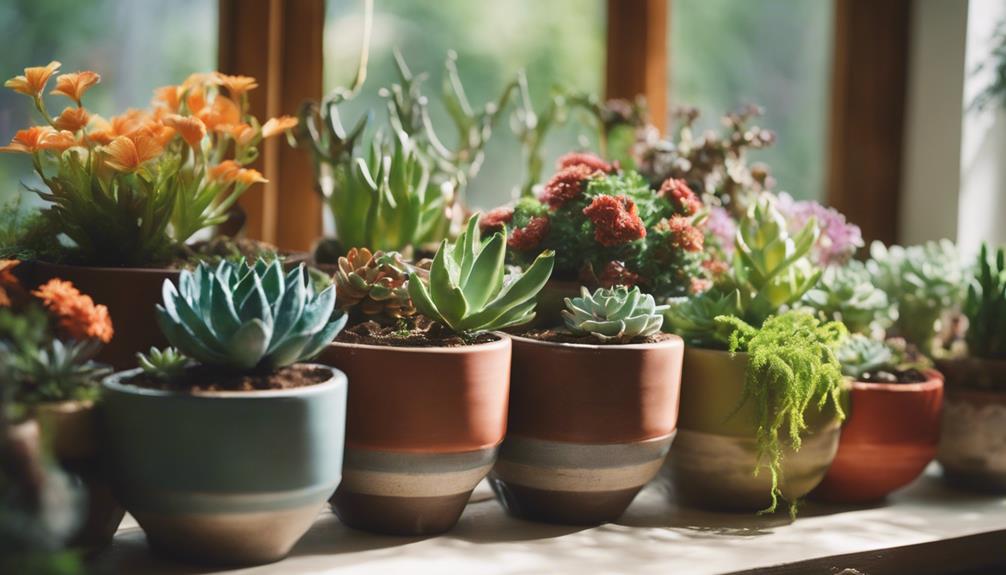
Choosing the right containers and soil is essential for the health and growth of your indoor garden.
Start by selecting pots with drainage holes to prevent waterlogging and root rot, which can harm your plants. Materials like plastic, metal, or ceramic are great options; just avoid clay, as it can retain too much moisture.
Consider the size of your containers based on the plants you're growing, opting for lightweight options for easy rearrangement.
Use a high-quality potting mix that retains moisture and provides essential nutrients. Incorporate slow-release fertilizers to ensure sustained nutrition, and remember to refresh your soil annually to replenish nutrients for thriving plants.
With the right choices, your indoor garden will flourish beautifully.
Watering Techniques
How often should you water your indoor plants to keep them healthy and thriving? It depends on the specific needs of your plants, but a consistent schedule is key. Check the top layer of soil daily; if it feels dry, it's time to water. Remember, the soil should be moist, not soggy. Using moisture meters can help you avoid overwatering, and consider bottom watering for sensitive plants.
| Plant Type | Watering Frequency |
|---|---|
| Herbs | Every 5-7 days |
| Succulents | Every 2-3 weeks |
| Ferns | Every 3-5 days |
| Cacti | Once a month |
| Tropical Plants | Every 1-2 weeks |
Adapt your routine as seasons change, and keep an eye out for signs of distress.
Pest Protection and Monitoring
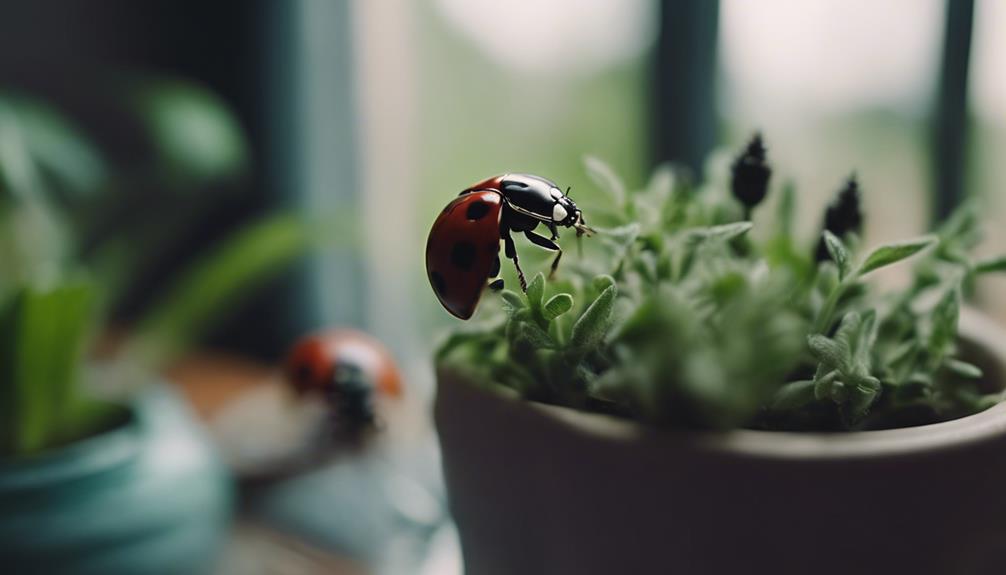
Inspect your indoor herbs regularly to catch any pests early and keep your plants healthy.
Look for signs of trouble, like discoloration and wilting, which might indicate pests such as spider mites or aphids. If you spot any, use a cool water spray to remove them and their eggs.
You can also create a simple pest-repelling spray by mixing 1 tablespoon of natural dish soap with 1 quart of water.
Keep an eye on your plants' overall health; overwatering can weaken them and make them more susceptible to pests.
If you encounter persistent issues, consult a plant nursery for expert advice.
Staying vigilant will protect your indoor garden and ensure it thrives.
Maintenance and Care
Regular maintenance and care are key to keeping your indoor garden thriving and free from pests. Regularly check your plants for signs of pests or diseases and prune dead or yellowing leaves to encourage new growth. Dust leaves to enhance photosynthesis, and rotate your plants for even exposure to light. Schedule periodic fertilization based on your plants' growth phases and monitor pH levels to ensure they're within the ideal range.
| Task | Frequency |
|---|---|
| Inspect for pests | Weekly |
| Prune dead leaves | As needed |
| Dust leaves | Monthly |
| Fertilize | Every 4-6 weeks |
Harvesting and Enjoying
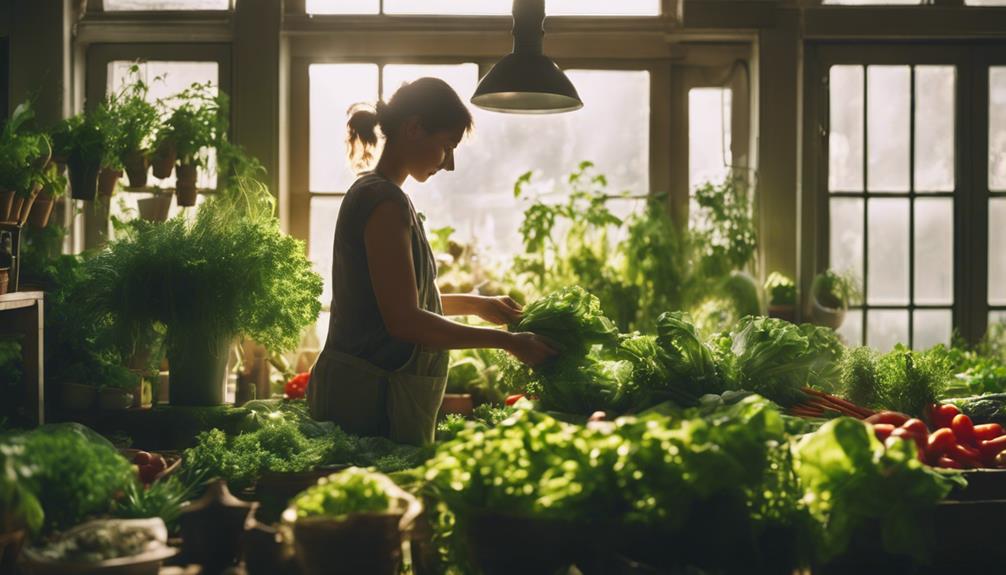
When your herbs reach 4-6 inches in height, it's time to start harvesting for the best flavor and freshness. Use clean scissors to trim the older, outer leaves first, ensuring you maintain the plant's health.
Limit your harvest to one-third of the plant at a time; this encourages quicker regrowth. Regularly snipping off leaves not only provides you with fresh ingredients but also helps your herbs thrive.
Once you've harvested, enjoy your homegrown herbs in various dishes—think flavorful pestos, aromatic teas, or zesty salads. You'll appreciate the taste and satisfaction of using your own indoor garden's bounty.
Transform your meals and elevate your cooking experience with the vibrant flavors of your indoor garden!
Conclusion
Creating an indoor garden not only beautifies your apartment but can also improve your air quality—studies show that indoor plants can reduce airborne toxins by up to 87% in just 24 hours!
By carefully assessing your space, choosing the right plants, and providing proper care, you'll cultivate a thriving oasis that nourishes both body and spirit.
So, dive in and enjoy the vibrant benefits of your indoor garden, bringing nature's beauty right into your home.

